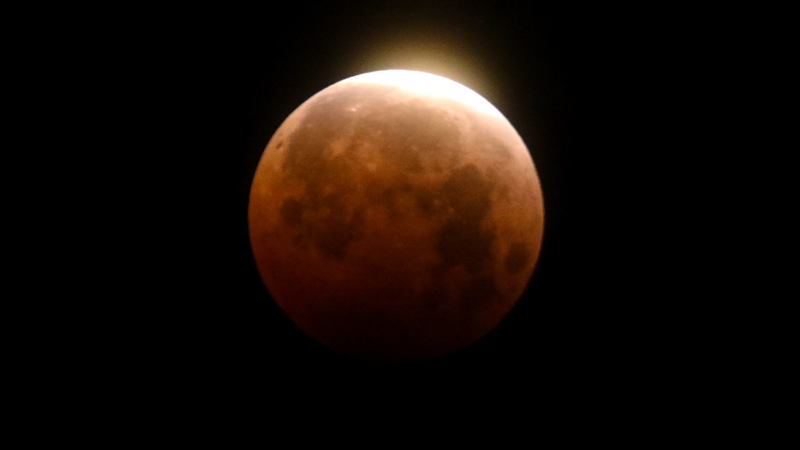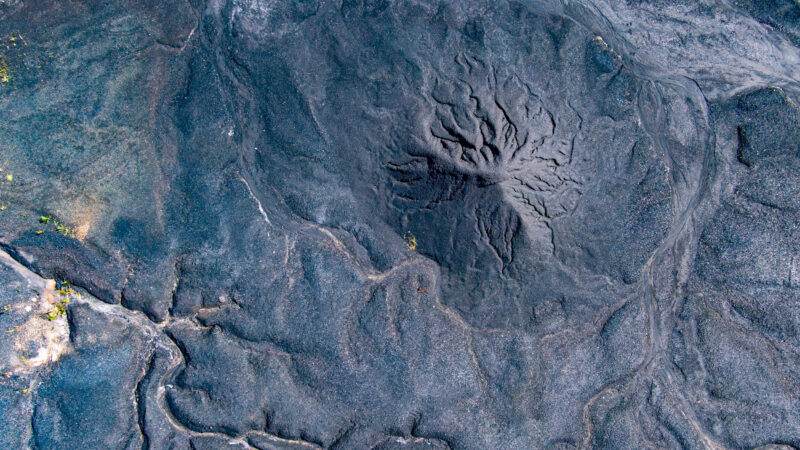What to know about this week’s ‘blood worm moon’ total lunar eclipse
Night owls across the U.S. and other parts of the world will be able to see the moon illuminated in a dusty red hue as it passes through the Earth’s shadow later this week during the total lunar eclipse.
Depending on your time zone, the celestial transit will occur Thursday evening or Friday morning and be visible in every U.S. state as well as other parts of the Western Hemisphere.
This total lunar eclipse — the first in three years — will feature a “blood worm moon,” so named for the reddish hue of its glow and the time of year it’s occurring.
Here’s what you need to know.
How to view the total lunar eclipse
A total lunar eclipse occurs when the sun, Earth and the moon align in roughly a straight line, with Earth in the middle. This is also known as syzygy.
The eclipse reaches totality as the full moon moves into the darkest part of Earth’s shadow, called the umbra.
People on the West Coast will see this week’s total lunar eclipse beginning at 11:26 p.m. on Thursday, while those on the East Coast will see it at 2:26 a.m. Friday morning. Totality will last for about 65 minutes. A partial eclipse will begin about an hour and 15 minutes before the total eclipse starts.

A dark environment will give you the best view of the eclipse, which can be seen with the naked eye. But a pair of binoculars or a telescope might make for a more impressive sight.
Because the Earth’s shadow will dim the radiance of the moon, you may also be able to see stars right next to the body’s edge, according to Sky & Telescope.
The magazine also noted that the top half of the moon may appear slightly brighter than the bottom half, since the moon won’t be centered in Earth’s umbra.
The origin of the phrase “worm moon”
A full moon in the month of March has historically been known as a worm moon, according to The Old Farmer’s Almanac.
That may be due to the emergence of earthworms around this time of year, as the weather warms up and spring nears.
But the publication offers another explanation for the name: in the 1760s, Captain Jonathan Carver documented that some Native American tribes used it to mark the appearance of beetle larvae from thawing tree bark.
Other names given to the March moon by various Native American tribes include the Eagle Moon, the Goose Moon, the Crow Comes Back Moon, the Sugar Moon, the Wind Strong Moon and the Sore Eyes Moon, the Almanac said.
Why the moon will take on a “blood” red color
Even though it will be fully in the Earth’s shadow, you’ll still be able to see the moon. That’s because it will be illuminated by light from the sun that passes through the edge of Earth’s atmosphere and bends toward the moon.
Long-wavelength red light traveling through that part of the sky will project a reddish hue onto the moon, giving it the sanguine moniker. Or as NASA puts it, the reddish-brown or reddish-orange color of the moon comes from “[t]he glow of all of the sunrises and sunsets on Earth.”
Exactly what shade of red the moon will assume may depend on how far into the umbra the moon travels and what’s present in Earth’s atmosphere — such as clouds or dust — at the time of the eclipse, Sky & Telescope said.
The term blood moon also refers to one of the full moons occurring near the beginning of fall, according to NASA.
Auburn fires coach Hugh Freeze following 12th loss in his last 15 SEC games
The 56-year-old Freeze failed to fix Auburn’s offensive issues in three years on the Plains, scoring 24 or fewer points in 17 of his 22 league games. He also ended up on the wrong end of too many close matchups, including twice this season thanks partly to questionable calls.
In a ‘disheartening’ era, the nation’s former top mining regulator speaks out
Joe Pizarchik, who led the federal Office of Surface Mining Reclamation and Enforcement from 2009 to 2017, says Alabama’s move in the wake of a fatal 2024 home explosion increases risks to residents living atop “gassy” coal mines.
‘It’s like feeling the arms of your creator just wrapped around you’: a visit to a special healing Shabbat
Members of Temple Emanu-El in Birmingham gathered recently for their traditional Friday Shabbat service. But this particular service was different, as could be seen by all the people dressed in their finest pink.
Space Command is coming to Huntsville. What might that mean for first-time homebuyers
While Huntsville has been a more affordable market than other growing cities, what’s it been like for those looking for their first home?
Colorado says relocation of Space Command to Alabama is ‘punishment’ for mail-in voting
The litigation announced by Colorado Attorney General Phil Weiser asks a federal judge to block the move as unconstitutional.
Breaking down Alabama’s CHOOSE Act
It’s been a year since Alabama legislators passed the CHOOSE Act allowing families to apply for state funds to use towards homeschool expenses and tuition for participating private schools. The Alabama Daily News’ education reporter Trisha Powell Crain has been diving into how the funds are being used. WBHM’s Andrew Gelderman sat down with her to talk about what we’re seeing so far.









